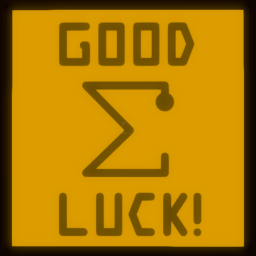For an example of me talking through a seed for all lasers, check here:
These thoughts were roughly thrown together the night I got a sub 30 in the category. For a more in-depth look through an any% seed that duplicates most of this information, check out this Google Doc.
Tutorial: For the two start panel, I just pick a start and start drawing the line unless I see that side fails, in which case I switch. If I guessed right then I saved the time of scanning for which is correct and if I guessed wrong then I had to scan anyway. For the big panel I mostly look for big paths that cut off parts of the maze and then see if I need to use or avoid those.
Dot panels: check for trivially impossible starts (from having to split the line) and that's about it.
Desert: It's all shuffled so I just reference a cheat sheet with all the solutions. For the outside, I save walking time by memorizing which position on my cheat sheet has the solutions for the upper 3 panels while walking to the first, and save waiting time by doing the same in the water room. My solution reference is sorted by starting location, with the central starts and only duplicated pattern separated. If a panel has starting points outside of the center, then it won't start in the center. The square panel is always RRRUULDLLURURR.
 Keep: I try to remember shapes rather than specific steps. Skip the second panel, remember the paths for the upper panel. It can be rough though.
Town: For the symmetry set, I focus on immediately sectioning off whichever group is larger close to the starting point and go from there. If the center is filled then it can be quite forcing. For the star door, I remember green/cyan, yellow/white, blue/black, and red/pink and just solve from there. It's tough but doable with a bit of practice, for parsing it. The dots set is actually pretty restricted and it just takes getting a feel for what kinds of shapes are possible to create.
Jungle: More memorization with the possible sound cues- I still don't have both combinations for the last 3 down yet but I did pick up that the last panel always has a (small, large, small) at the start or finish, which helps. The cues are specifically: (SL), (SL), (MMSML), (SMSL or LMMSL), (SSLML or MMSML) and (SLSLM or LMSLS).
Mountaintop: The "edge" starting point is often the most restricted and it's worth trying the vanilla angle. The other two are often doable by going around the outside, possibly even from the starting point.
Keep: I try to remember shapes rather than specific steps. Skip the second panel, remember the paths for the upper panel. It can be rough though.
Town: For the symmetry set, I focus on immediately sectioning off whichever group is larger close to the starting point and go from there. If the center is filled then it can be quite forcing. For the star door, I remember green/cyan, yellow/white, blue/black, and red/pink and just solve from there. It's tough but doable with a bit of practice, for parsing it. The dots set is actually pretty restricted and it just takes getting a feel for what kinds of shapes are possible to create.
Jungle: More memorization with the possible sound cues- I still don't have both combinations for the last 3 down yet but I did pick up that the last panel always has a (small, large, small) at the start or finish, which helps. The cues are specifically: (SL), (SL), (MMSML), (SMSL or LMMSL), (SSLML or MMSML) and (SLSLM or LMSLS).
Mountaintop: The "edge" starting point is often the most restricted and it's worth trying the vanilla angle. The other two are often doable by going around the outside, possibly even from the starting point.
Floor 1 (purple path): No way around learning the implicit requirements on the path itself. I try to find a path that lets me solve all the panels at once. For the green set, it's worth deliberately failing with quick lines to try to memorize where the dots are on the later panels, while it's possible to parse and solve the first few. For the purple ones, the shapes almost always go together and can be fit in around the stones easily enough. For the blue ones, the first and third can always be done snapped in and the second can be done snapped in or one cell to the right- generally, peaking behind the girder to see if you need a segment there is sufficient to tell. The orange set can be practiced for by doing the treehouse and swamp generally- it's worth pre-planning the last two paths before drawing them in. This part is really hard!
Floor 2: The color set has some useful tricks. I tend to look for if a flashing symbol has a matching color when the background doesn't match, as I find that easier to check. The first panel can almost always be done by pairing the stars of one color with the stones of the other color. The second can be quite tricky since one star of one color will need to pair with a stone. It's worth checking for a 4 region solution. The third is more of the same, but slightly more restricted as both colors have to pair with a stone. The fourth is worth stating from the shapes and then trying to backfill the stars. The fifth can be done by checking to see if the lines matches the dot color when drawing over it- if it doesn't, then it's the other color. Double bridges can virtually always be done by pinning a shape and going to the left side, then pinning the other shape with orange, and then walking back and finishing with blue. Rarely, it can be done by taking blue to the right side and then leaving with orange. The multipanel is generally trivial until the shapes are added, at which point finding a placement of those that works with the stars is the way to go. The last two panels can screw with that placement sometimes, and when it does it's often hard.
Floor 3: Metapuzzle is best to start with any forced shapes, and then seeing if it's possible by cell count to have two shapes. If any shape is 3 wide, then all the shapes must be together in the center and it's worth trying to tuck shapes into the middle. Double doors are vanilla. The pillars, I don't really have much advice for. Star pillar is worth touching the top and bottom alternately, stones pillar is worth picking a color and pinning them as you go around, and so on. Grinding the challenge helps here.




